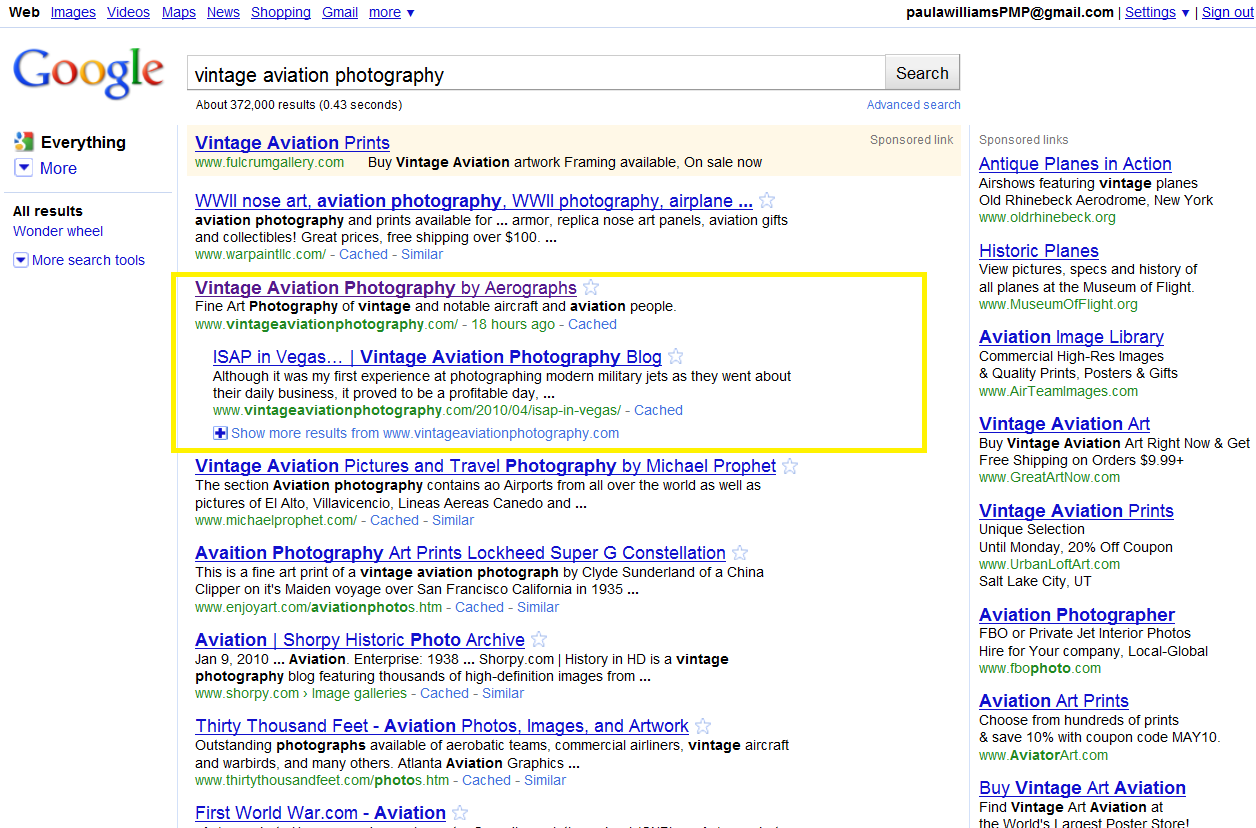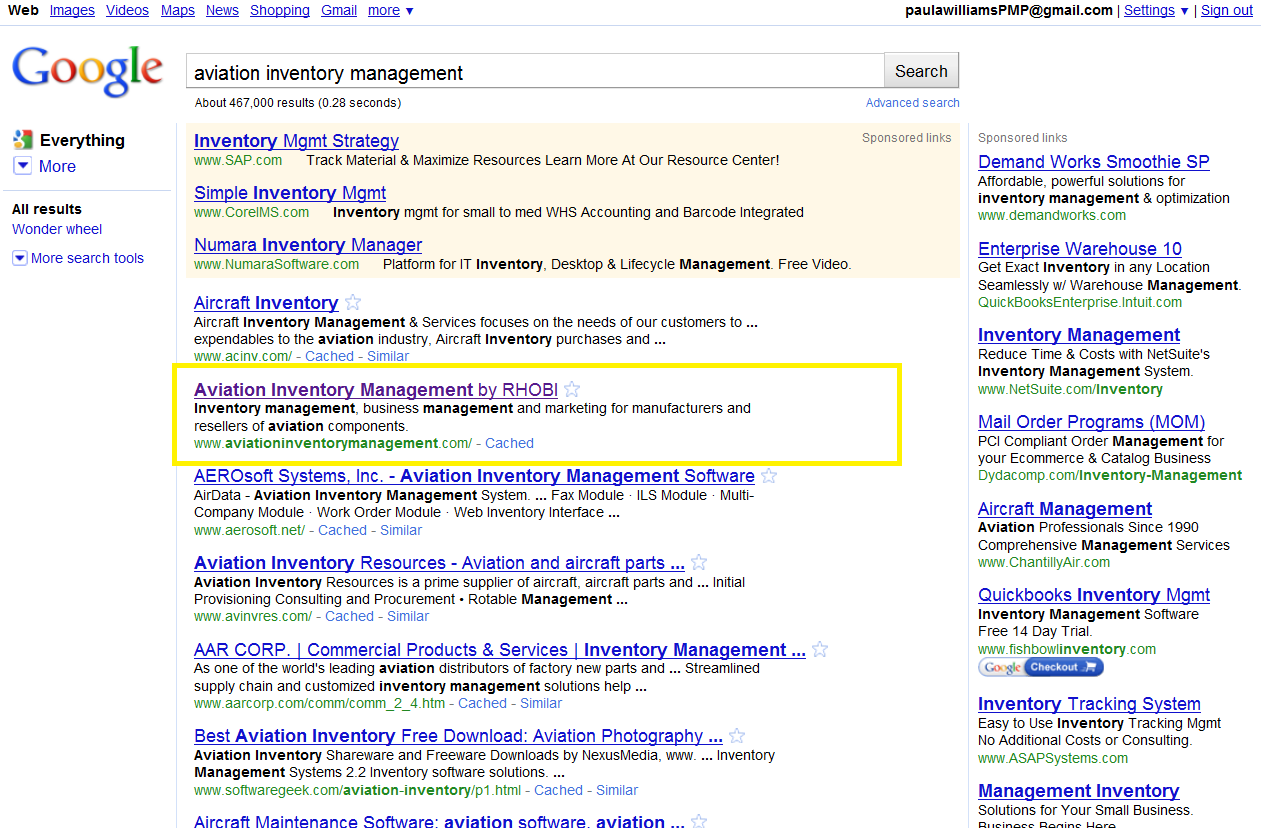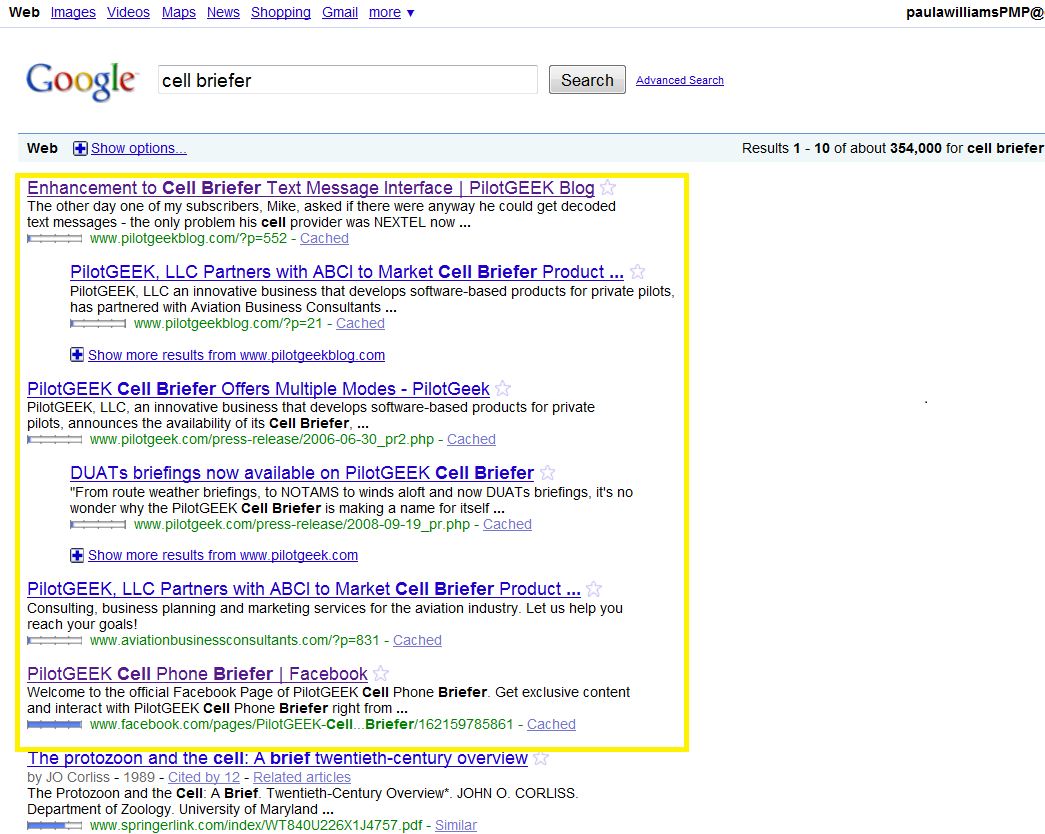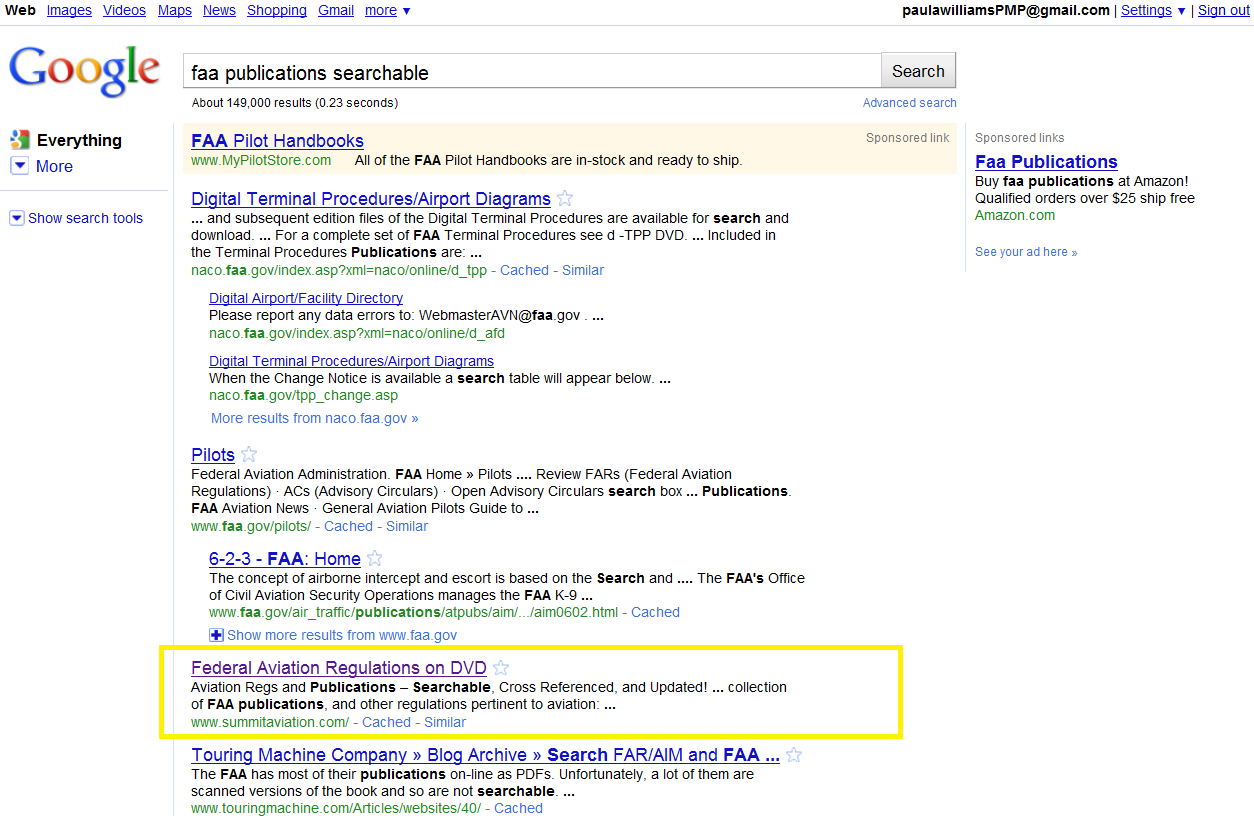It’s very important for ABCI to get our Search Engine Optimization clients’ web sites to the first page of Google results for relevant search terms.
When people are searching the web for a product or service, they usually contact one of the companies in the first page of results.
Having a good ranking in Google and the other search engines is seen as an indicator that a company is “reputable,” or at least has invested in their corporate identity on the web. Comfort level goes up – we all feel better about working with someone who appears to be a leader in a particular industry, has invested time and effort in their company’s image, and appear to know what they’re doing.
Here are the Google search results for a few of our clients.
In each of the following screen shots, we’ve circled our clients’ listings in yellow.
Google Search Results for “Vintage Aviation Photography”
Paid results, including sponsored links and pay per click ads show up at the top of the Google results page and along the right column. While they are also a good way to get attention, we prefer to optimize pages for “natural” or “organic” search. Paid results last only as long as you keep paying the search engine. Natural or organic search results last as long as your site ranks well for that term using the search engine’s algorithms.
A lot of companies have paid Google for listings for the keywords “vintage aviation photography.” My client, Aerographs, has the number three position. Since the top one is a sponsored link, (the listing from Fulcrum Gallery is a paid ad) this would actually make them number two in the “organic” or “natural” search results.
Since the search engines are in business to provide the most relevant and useful information to the people that use them to search for information, they have an interest in ensuring that search results are credible.
The keywords “aviation inventory management” has several large corporations competing for attention.
Google Search Results for “Aviation Inventory Management”
When there’s not as much competition, we can dominate the search results screen with articles, blog posts, Facebook profiles, and related articles, like we did here with the PilotGeek Cell Briefer product.
Google Search Results for “Cell Briefer”
Another of our clients, Summit Aviation, has a unique challenge. Their product is to provide a subscription service to searchable, indexed aviation regulations and publications. The government agencies that produce these regulations and publications have pretty much “cornered the market” for terms like “faa regulations,” “aviation regulations,” and “faa publications,” so we had to think outside the box.
All of these terms are dominated, as you would expect, by sites such as http://www.faa.gov, the Federal Aviation Administrations official site. And those of related government agencies.
Google Search Results for “FAA Publications Searchable”
 It takes diligent work to find the perfect keyword for the product or service that our client provides, and it takes more diligence and more work and (as well as some patience) to get our clients to the first page of Google. I attend professional courses every year to keep up on the changes in the search engine market and algorithms since they change so quickly.
It takes diligent work to find the perfect keyword for the product or service that our client provides, and it takes more diligence and more work and (as well as some patience) to get our clients to the first page of Google. I attend professional courses every year to keep up on the changes in the search engine market and algorithms since they change so quickly.
And unlike many search engine optimization specialists, we speak the language of aviation. We know what aviation people are really looking for.
It’s one of our objectives to make sure that happens within the first three months. We’ve found an excellent search engine ranking is one of the key success factors in getting them connected with sufficient numbers of the right types of clients and customers that can make a difference in their business.
d.getElementsByTagName(‘head’)










I visited several websites except the audio quality for audio
songs present at this web site is in fact excellent.
[…] John Williams: Technology is changing almost daily with respect to what it is that Google and the other heavies want with respect to how you place words, phrases, content, and meta data and so forth. And I mean changes daily several times but the major changes are the ones we try to keep up with and we hire people to do search engine optimization for aviation companies. […]